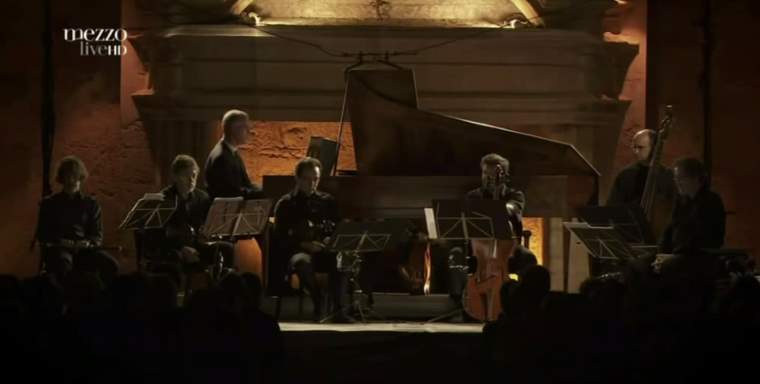An early music concert: Folies d’Espagne: conducted by Jordi Savall, international early music ensemble Hespèrion XXI performs folias from Spain. La Folía (Spanish), also Folies d’Espagne (French), Follies of Spain (English), or Follia (Italian), is one of the oldest remembered European musical themes, or primary material, generally melodic, of a composition, on record.
Folies d’Espagne Program
- Danzas Moriscas & Músicans & la Diaspora Sefardi
- Alba
- A la una yo naci
- Danza de las espadas
- Moresca ~ Danza ritual
- Diego Ortiz: Folias & Romanescas
- La Spagna
- Passamezzo antico I
- Folia IV
- Ruggiero IX
- Romanesca VII
- Passamezzo moderno II
- Anonymous: Tarantela
- Glosados & Improvisaciones
- Francisco Arrauxo; 3 glosas “todo el mundo en general”
- Antonio Valente: Gallarda Napolitana
- Antonio Martin y Coll: Diferencias sobre las Folias
- Anonymous: Canarios
- Encore:
- Anoymous: La folia
Musicians:
Jordi Savall, Arianna Savall, Rolf Lislevand, Pedro Estevan, and Adela Gonzales-Campa.

La Folía
La Folía, also known as Folies d’Espagne in French, La Follia in Italian, and Folia in Portuguese, is one of the oldest and most enduring musical themes in European history. Originating in the late 15th century, it has captivated composers and audiences for centuries, evolving through various styles and interpretations.
Origins and Early History
La Folía’s roots are somewhat shrouded in mystery, but it is generally believed to have originated in the Iberian Peninsula. Initially, it was a lively, wild dance accompanied by simple, repetitive harmonic patterns. The term “folía” itself means “madness” or “folly” in Spanish and Portuguese, reflecting the dance’s exuberant and frenzied nature.
Evolution of the Theme
Over time, the original Folía transformed from a wild dance into a slower, more stately form, becoming a set of variations based on a simple, recurring chord progression. This progression typically involves a series of minor chords moving in a descending pattern, which creates a sense of inevitability and tension that has proven irresistible to composers.
Baroque Era and Popularity
The Folía reached the height of its popularity during the Baroque period. Many composers of this era were fascinated by its potential for variation and elaboration. Jean-Baptiste Lully, a prominent French composer, incorporated La Folía into his ballet “Le Triomphe de l’Amour” in 1681. Arcangelo Corelli, an influential Italian composer, created perhaps the most famous set of Folía variations in his “Violin Sonata Op. 5, No. 12” (1700). Corelli’s work became a model for subsequent composers and solidified the theme’s place in the Baroque repertoire.
Later Adaptations
La Folía continued to inspire composers well into the Classical and Romantic periods. Ludwig van Beethoven wrote a set of variations on the theme in his “Twelve Variations for Cello and Piano in G major,” and Franz Liszt incorporated it into his “Rhapsodie Espagnole.” The adaptability of the Folía theme allowed it to be reinterpreted in various musical contexts, demonstrating its timeless appeal.
Modern Interpretations
In the 20th and 21st centuries, La Folía has seen revivals and reinterpretations in both classical and popular music. Composers like Maurice Ravel and modern musicians have drawn inspiration from its rich history and emotional depth. The theme has appeared in film scores, jazz improvisations, and contemporary classical compositions, showcasing its enduring versatility.
Cultural Significance
La Folía’s longevity and widespread influence can be attributed to its compelling harmonic structure and the emotional intensity it evokes. Its transformation from a raucous dance to a refined set of variations mirrors the broader evolution of European music from the Renaissance to the modern era. The theme has become a symbol of musical continuity and creativity, bridging centuries and cultures.
La Folía is not just a musical theme but a testament to the enduring power of music to evolve and inspire across generations. Its journey from the Iberian Peninsula to the concert halls of Europe and beyond highlights the dynamic nature of musical tradition and the timelessness of artistic expression.
Sources
- Folia on Wikipedia
